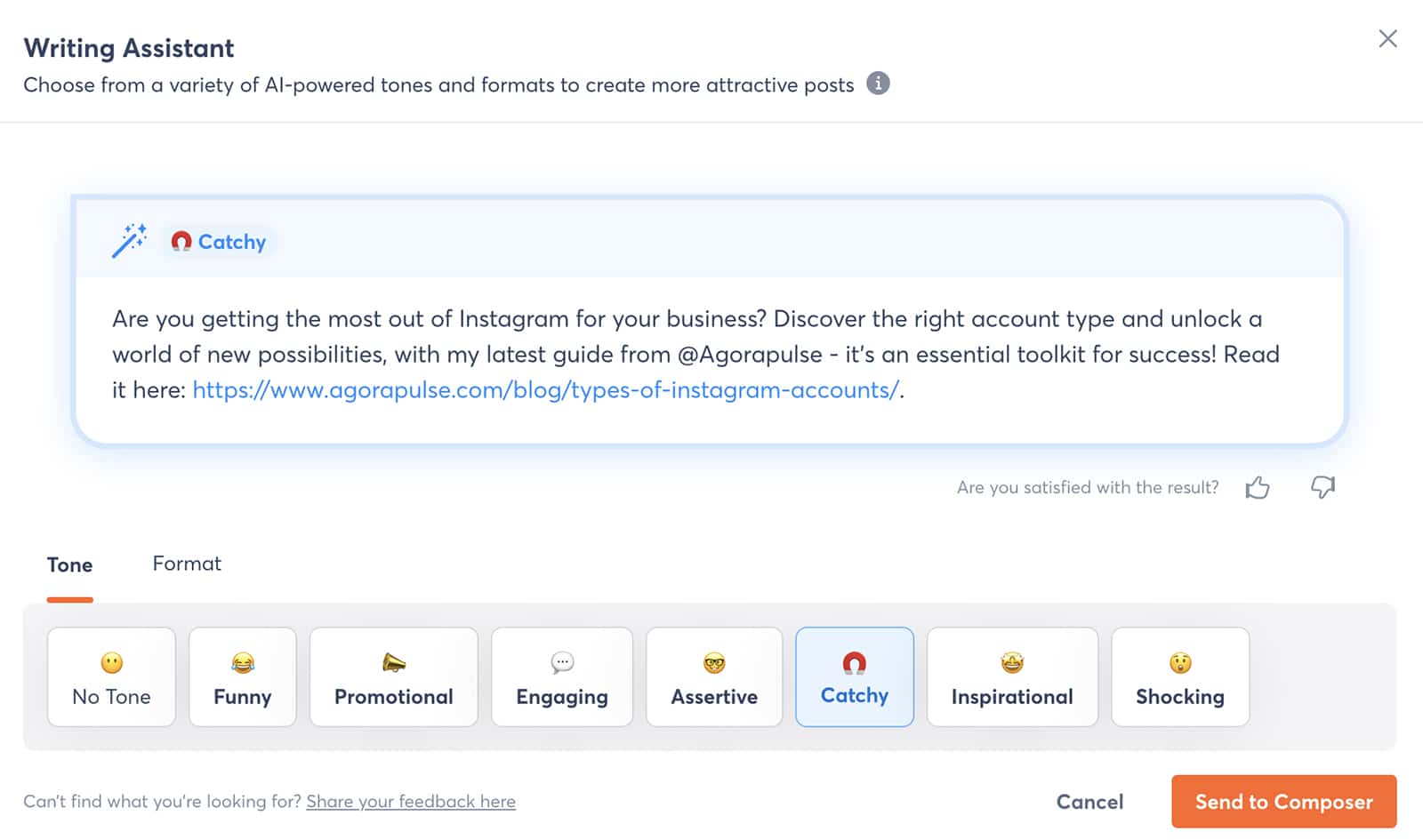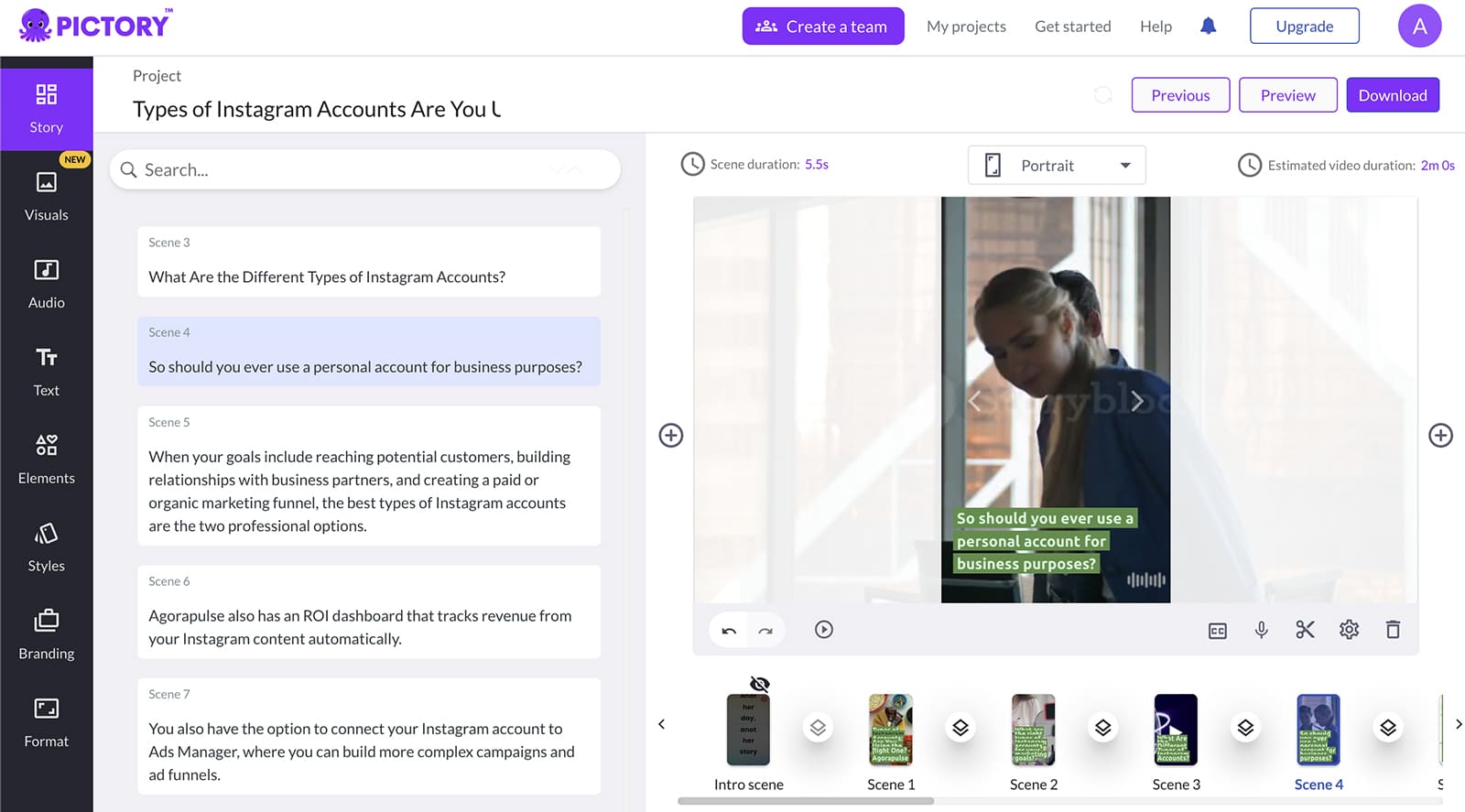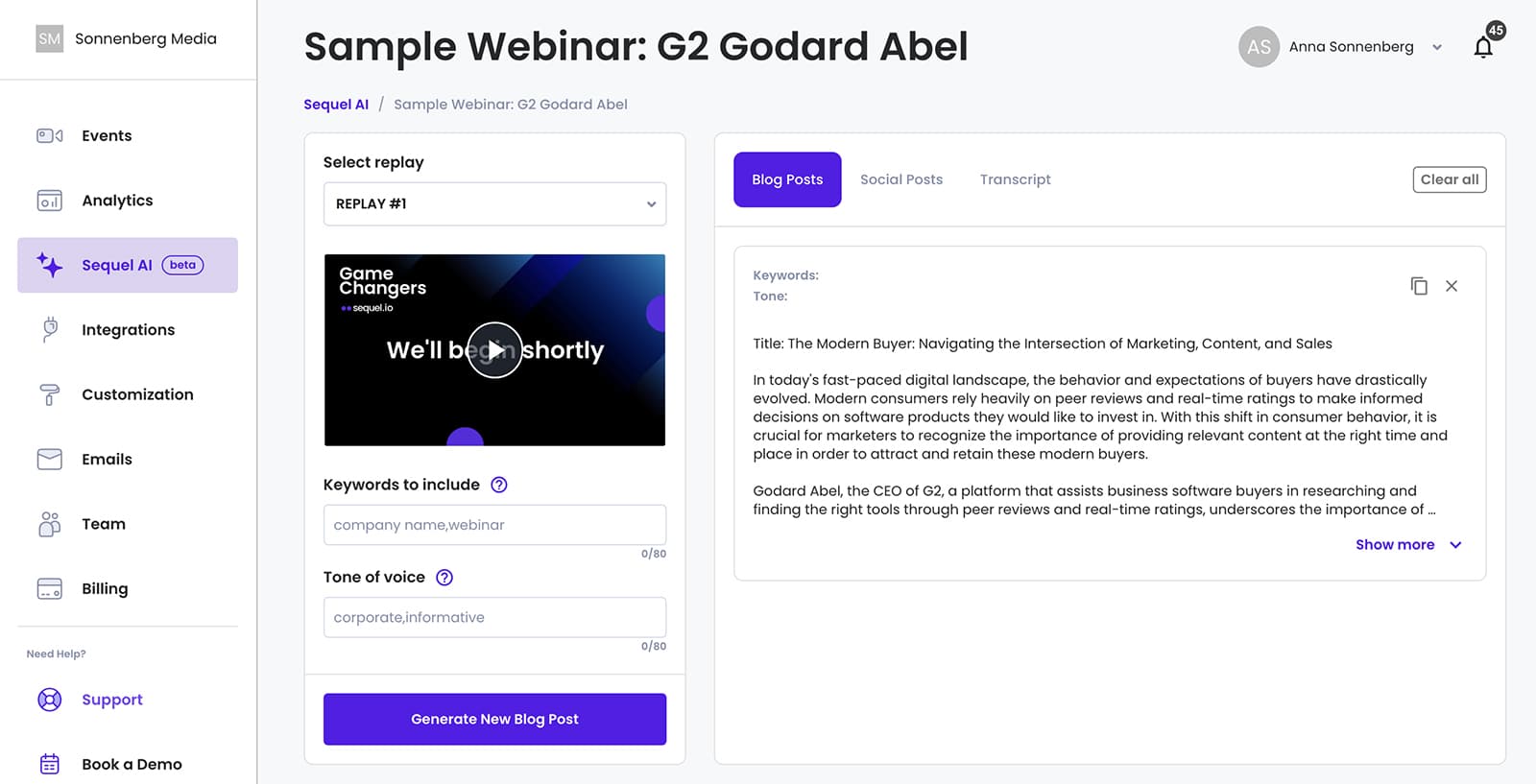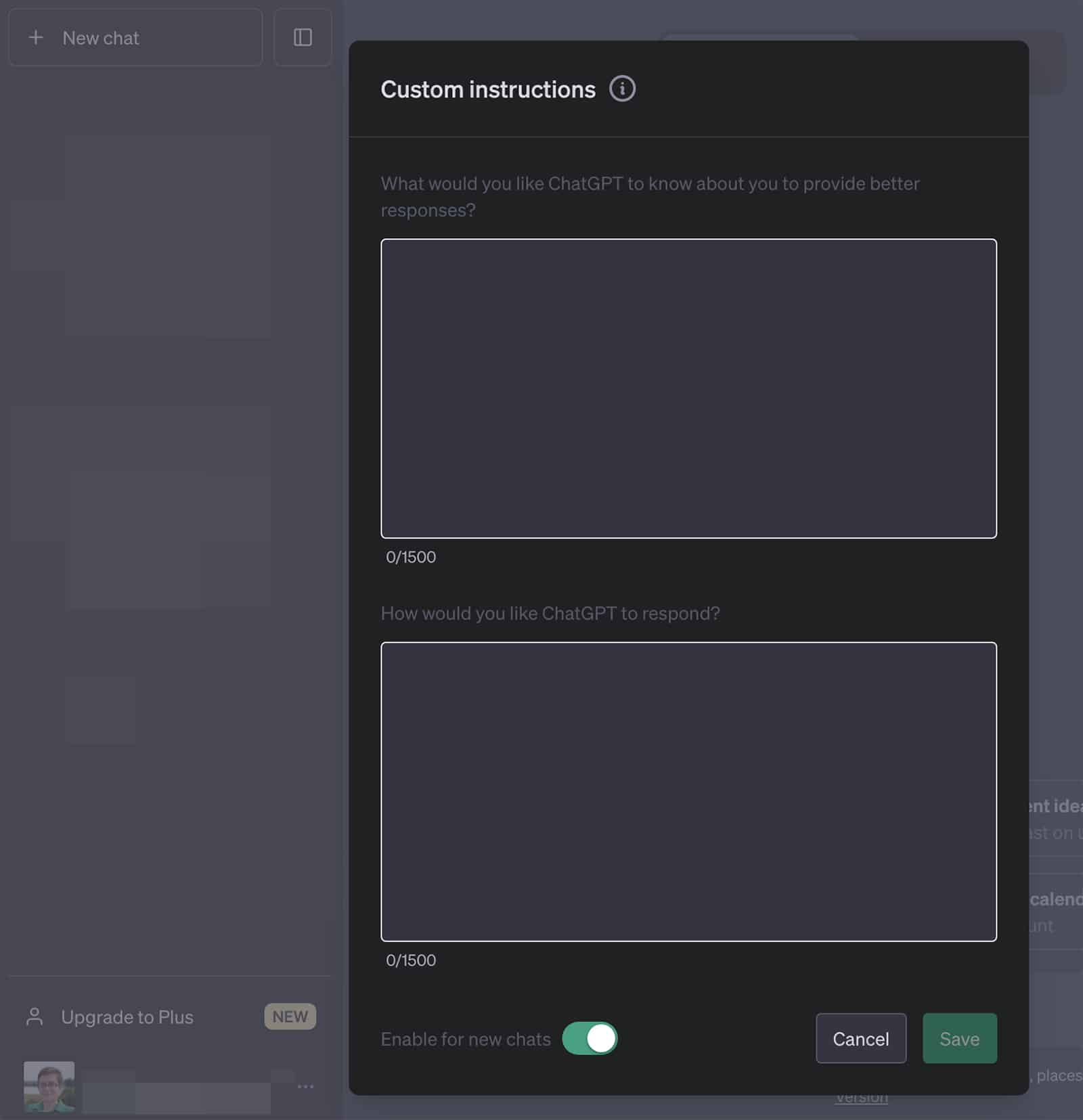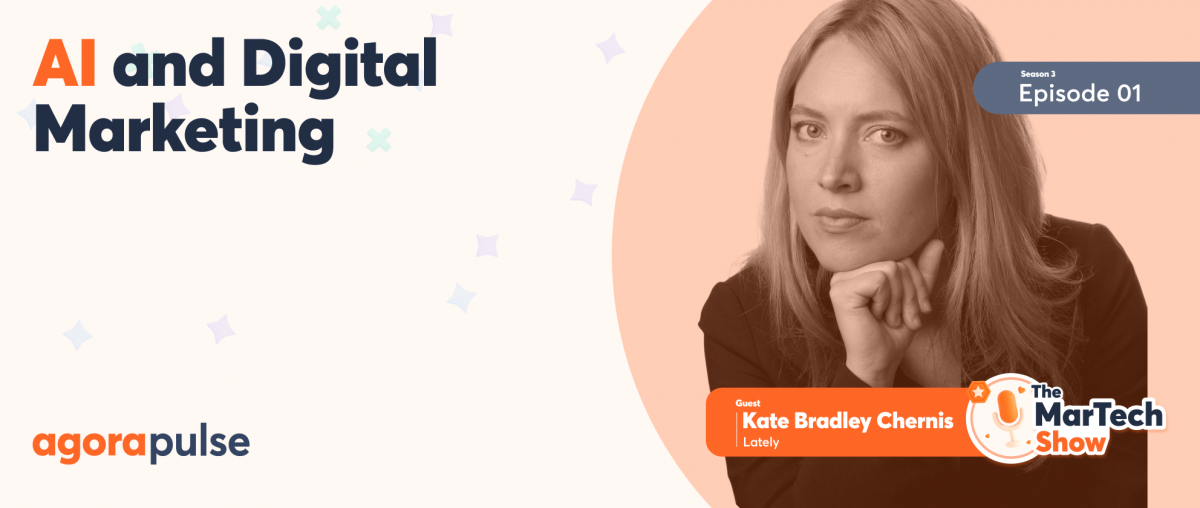For CXOs (chief experience officers), incorporating AI isn’t as simple as plugging in an extra tool here or there. When you make the decision to invest in AI, you need to know how this tech could affect your bottom line and achieve measurable outcomes.
If you’ve been asking yourself “How can I use AI to make money for my business?” or “How can I align AI with business goals without incurring tons of additional costs?” this conversation is for you.
In this article, we’ll explore how founders and marketing leaders are already using AI to drive revenue. We’ll also share tips for harnessing the power of AI while maintaining quality, brand voice, and a human element in your marketing content.
If you’d prefer to listen to the conversation, tune into the webinar hosted by Kelly Mirabella of Stellar Media Marketing. This article recaps insights from “How to Drive More Revenue With AI,” an Agorapulse Agency Summit event.
How to Make Money Using AI
The biggest question for most decision makers isn’t if or when to start using AI. It’s how to use AI tools in a way that drives revenue for the business.
Expand on core products and services
Oana Manolache, Founder and CEO of Sequel.io, recommends identifying what you do best to start. Then map out adjacent products or services you might offer.
Let’s say you’re an executive at a marketing agency. Say your team specializes in developing high-performing video strategies for clients. Your team does great work, but it would be easy to expand these services.
For example, Oana proposes that you might create landing pages for the video series. You could also think about offering scriptwriting, video production, or content repurposing. You could handle any of these services with help from AI tools.
This approach isn’t about making a complete pivot. Instead, focus on services that leverage your core offering. Then help clients get even more value from it. With this method, you can enhance rather than diminish your core product or service.
Oana suggests pitching an expanded test offer to existing clients first. Once you’ve figured out how to package the upsell and perfected the workflow, you can start selling these expanded products or services to land new clients.
Leverage your team’s skills
Marc Gawith, Head of Business Development and Partnerships at Pictory.ai, suggests using AI in a way that builds on your team’s skills. After all, your team’s time is best devoted to strategic and creative thinking.
As an example, say one of your agency’s best employees is a top-tier video editor. Ideally, you want them to apply their skills to video projects that require a creative touch and an experienced editor’s eye.
When that’s the case, you shouldn’t assign your video editor to complete repetitive tasks. For example, a top-tier video editor probably shouldn’t waste time iterating on creatives for social media ads.
Instead, assign your best team members to big-ticket projects that truly demand their skills. Then your agency can execute major projects more effectively, and your business can make more money without exhausting your best team members.
At the same time, Marc recommends leaving most of the project’s manual or repetitive tasks to AI. You may still need a human to check the output. But overall, this process can help you do more with your team’s skills.
Lighten your team’s workload
Katie Richman, Founder of Technormal, suggests using AI in a way that significantly lightens your team’s workload. Drawing on her experience at Meta, Katie recommends that businesses “try to get 90% code complete without engineers.”
Think of your skilled team members as the engineers in this scenario. Then use AI to complete the vast majority of their work.
Your team will almost certainly have to do a manual review and add a human element to the work. But they’ll have so much less to do before diving into the part that they do best.
How to Decide Which AI Tools to Prioritize
The AI-powered software landscape has expanded dramatically in the past year. In many ways, that’s a good thing. Now there are countless tools available to help you complete almost any task.
Yet having so many options isn’t always great. In every possible category, there are more potential tools than you could ever consider. How can you compare them, and which should you prioritize?
Start with the end goal
As a decision maker, you can’t risk becoming distracted by every new tool on the market. Marc recommends that marketing leaders “begin with the end in mind” when considering AI.
In other words, start with the goal you want to achieve. What’s your objective? Perhaps you want to:
- Get more value from your podcast by promoting it more effectively.
- Generate more revenue from paid social ads at a lower cost per result.
- Convert more social media followers into customers by producing better content.
Marc also recommends knowing your limitations. Here’s how to consider them in the context of the goals above:
- You have a great podcast recording and video, but no tools or team members to turn it into shareable clips or videos.
- The campaign is showing signs of ad fatigue, but you don’t have time to identify or iterate on successful ads.
- You know what kinds of posts work best for your audience, but you need help creating them on a limited budget.
Once you know your end goal and your limitations, you can find a tool that can bridge the gap, as Marc explains. Defining that difference is one of the most important parts of the process.
As Oana explains, you’ll end up duplicating your efforts and creating multiple outputs if you use tools that overlap. To streamline resources and results, know what gaps you truly need to fill.
5 Types of AI tools to help you do more with less
To reduce overlap and maximize resources, it’s often best to choose AI tools for marketing that can accomplish multiple tasks. Katie encourages marketing leaders to think of these types of platforms like chef’s knives, or multipurpose tools.
1. Social media marketing tools
For social media marketing teams and agencies, creating high-quality content is often the most time-consuming task. With the right social media management dashboard, you can produce better content and handle scheduling, engagement, and reporting.
As a social media management solution with AI, Agorapulse can streamline your social media marketing workflow while helping your team leverage artificial intelligence.
Agorapulse’s AI-powered Writing Assistant takes your caption ideas and makes them shine. It has seven tones that can make your content sound more engaging, promotional, or catchy. The tool can also make your captions longer or shorter in one click.
Once you’ve perfected the caption, you can rely on Agorapulse to schedule your content and publish it automatically. Agorapulse can also automate your reporting process, freeing up tons of time for your team.

2. Graphic design tools
Whether you want to create better graphics for social media, podcast thumbnails, or your website, AI-powered design tools can help. Canva has both text-to-image generative AI tools and AI-powered editing tools.
Using Canva’s AI tools and Agorapulse together can speed up your workflows even more. Since the two tools are integrated, you can open up your Canva dashboard directly from Agorapulse and import your team’s content quickly.
3. Video and podcast marketing tools
Repurposing podcasts and videos is much easier when you leverage AI. With a tool like Pictory, you can create branded clips from long-form videos, which you can publish to your website, social media, or ad platforms.
If you don’t have a video marketing team, Pictory help you open up new revenue streams. The platform can turn a text-based blog post into video content. It automatically identifies scenes, suggests templates, and generates a storyboard for your video.
4. Webinar marketing tools
Webinars can be incredibly helpful for lead generation, but they can drive even more revenue when you take them out of the standard format. With a tool like Sequel, you can repurpose webinars into blog posts and social media content in seconds.
Sequel automatically generates marketing content from your inputs. But you can provide additional prompts—such as keywords and tone of voice—to make sure the outputs are exactly what you want.
5. Productivity tools
When you need to brainstorm more efficiently or map out marketing calendars, AI productivity tools can save you a lot of time and hassle. With tools like ChatGPT, you can essentially build your own marketing assistant.
To improve the quality of the output, it’s helpful to create custom instructions first. Then use the tips below to train the tool and write more effective prompts.
Tips for Maintaining a Human Element in AI Workflows
When considering how to use these tools, a key concern for marketing leaders is striking a balance between AI and human. How can you maintain a human element, and how should you incorporate AI in your workflows?
Think of AI as an assistant
Katie encourages marketing leaders to think of AI as “an extension of your brain and creativity—a brainstorming machine.” She suggests treating this technology like an intern or an assistant.
In other words, don’t think of it as software. When writing prompts, think about how you’d say them to a human. With this approach, you’ll get the most useful (and the most human) outputs.
Avoid using AI as a replacement
Marc cautions decision makers to remember that “AI isn’t here to replace us as humans.” Instead, Marc explains that AI is “a tool to help enrich our lives and our experiences as professionals.”
In other words, avoid viewing AI as technology that can replace the need for human input or skills. Instead, look at it as technology that can improve workflows and buy back time for your team.
Remember that “we have a finite amount of time as professionals,” as Marc says. When you let AI handle your team’s busywork, you can use your skills to execute high-level strategic and creative work, which can drive more revenue for the business.
Let AI make you superhuman
Oana invites decision makers to think of AI as something that can amplify your efforts and take them to the next level. She explains, “AI is more about making us superhuman.”
When you use AI in this way, Oana says you can prioritize “driving the business forward” rather than devoting time to manual work. Then you can focus on the outcomes you need to achieve rather than on the individual tasks required.
How to Monitor AI Quality While Maximizing Efficiency
One of the biggest perks of AI is that it can speed up tedious processes and make workflows more efficient. Yet faster work doesn’t always lead to high-quality results. So how can you leverage the speed without compromising the quality?
Improve your AI prompts
As Oana states, “It’s all about input.” When your team works with AI tools, the most important step you can take is providing better prompts or source material. In many cases, that means creating more detailed prompts or even training your tools.
Like many marketing leaders, Oana initially had reservations about how high-quality AI outputs could really be. When using ChatGPT, for instance, many users repeat the same prompts, which lead to similar responses of more or less equal quality.
She quickly realized that the key to getting better results is simply feeding these tools better information. This approach works with ChatGPT, but it also applies to just about any AI tool you use for your business.
Whenever possible, Katie recommends inputting your brand voice directly into the platform. For example, upload a blog post you’re particularly proud of and use it to train your AI assistant to create more content in the same tone.
Provide top-quality AI inputs
In many cases, high-quality inputs go beyond prompts. If you’re using AI tools to repurpose visual content, for example, it’s critical to provide high-quality source material.
For example, say you want to turn a long-form webinar into shorter clips to publish on social media. The video file you upload to the AI platform should be as high-quality as possible, with HD video and clear, crisp audio.
The same goes for repurposing other media, such as podcast content. You need great sounding audio to generate high-quality clips for social media. If you struggle with sound quality, you’ll want to use AI audio tools during the recording process.
Kelly recommends that marketers “start with your zone of genius” when working with AI tools. For example, feed it your best video, podcast, or blog post. Then use AI to repurpose it into other formats or create more content like it.
How to Keep Brand Voice Consistent When Using AI
For many marketing leaders, creating high-quality AI-generated content is just the first step. When you want to develop more efficient workflows, you need AI tools to generate content that sounds like your brand—consistently.
Factor brand voice into the input
Again, the inputs are the key to success. As Katie states, “The prompt weaves all the pieces together.” In fact, Katie recommends starting with similar prompts, no matter what format or media type you want as the output.
Marc encourages marketers to start with inputs that already use the brand voice you want to convey. For example, if you feed a great webinar into an AI tool, you can automatically turn it into several different content types in minutes.
In other words, if the source material already nails your brand voice, it can easily turn into omnichannel content. The right AI tool can take a webinar and turn it into a blog post, a short-form video, a social media post, or even an email campaign—all in your brand voice.
Take time to train your AI tool
When possible, Kelly recommends taking time to train any AI tool you use. For example, agencies that work with multiple clients can train AI tools on each individual client by feeding each brand voice into the platform.
Kelly suggests essentially creating personas by feeding the platform content from the client’s website or social media channels. Then her team can use AI to create chatbots, social media content, and other marketing materials in the client’s brand voice.
Wrapping Up What We Learned About How to Use AI to Make Money
With the right AI tools and tactics, you can leverage this tech to drive revenue and meet business goals. But you have to build your martech stack carefully.
Our AI-powered Writing Assistant is designed to enhance your marketing workflow and improve your social media output. Take a look at the Agorapulse Writing Assistant and book a demo to see it in action.



